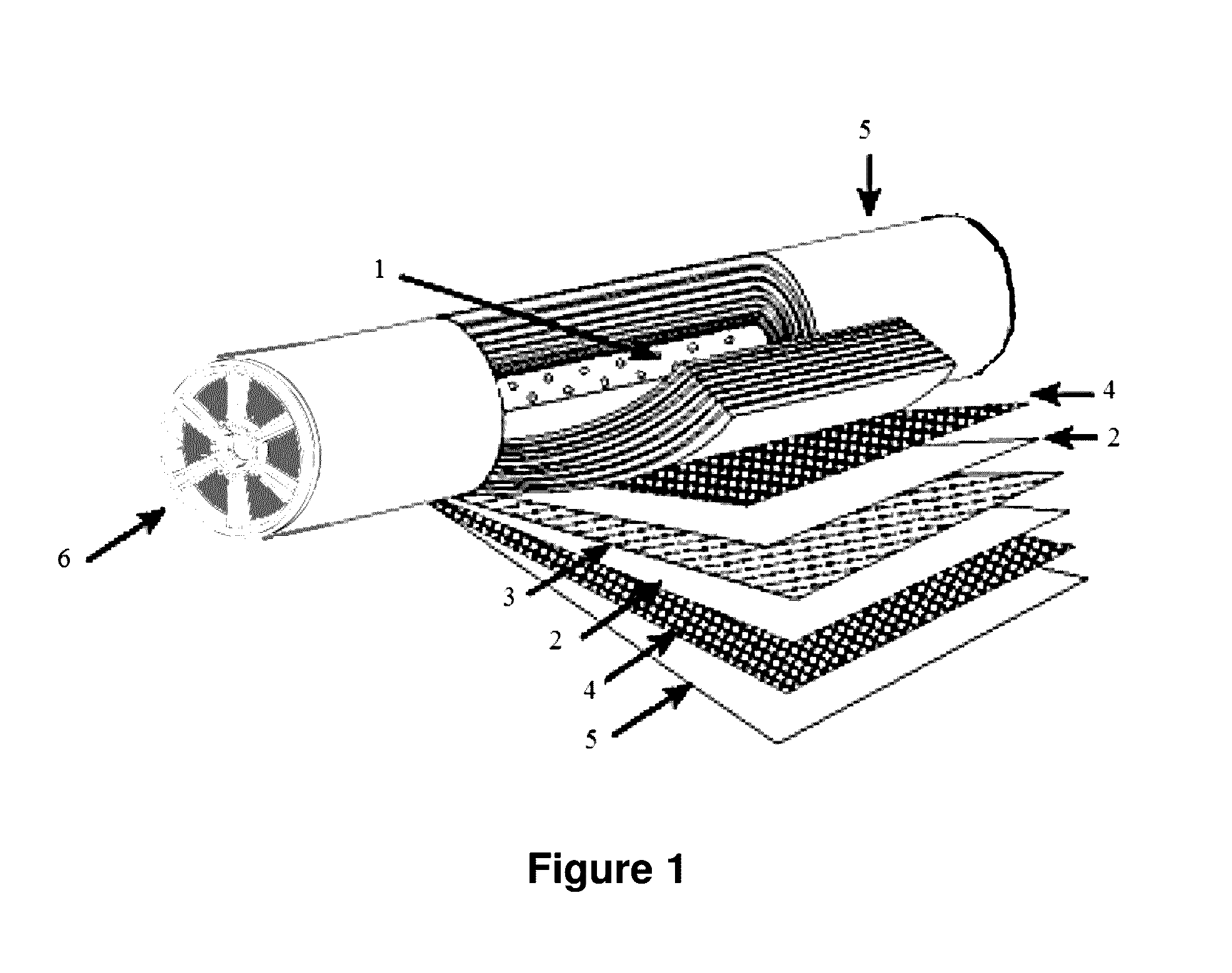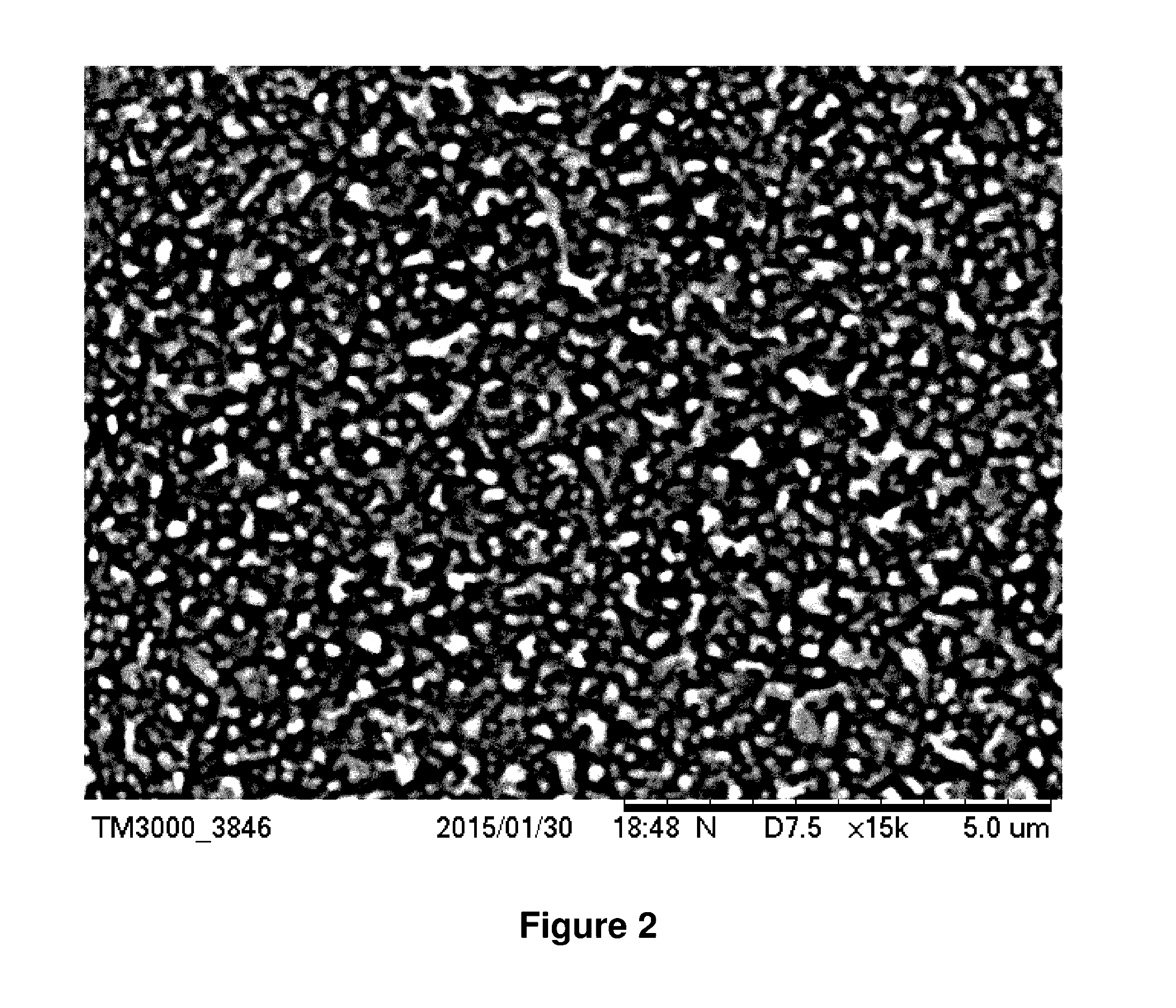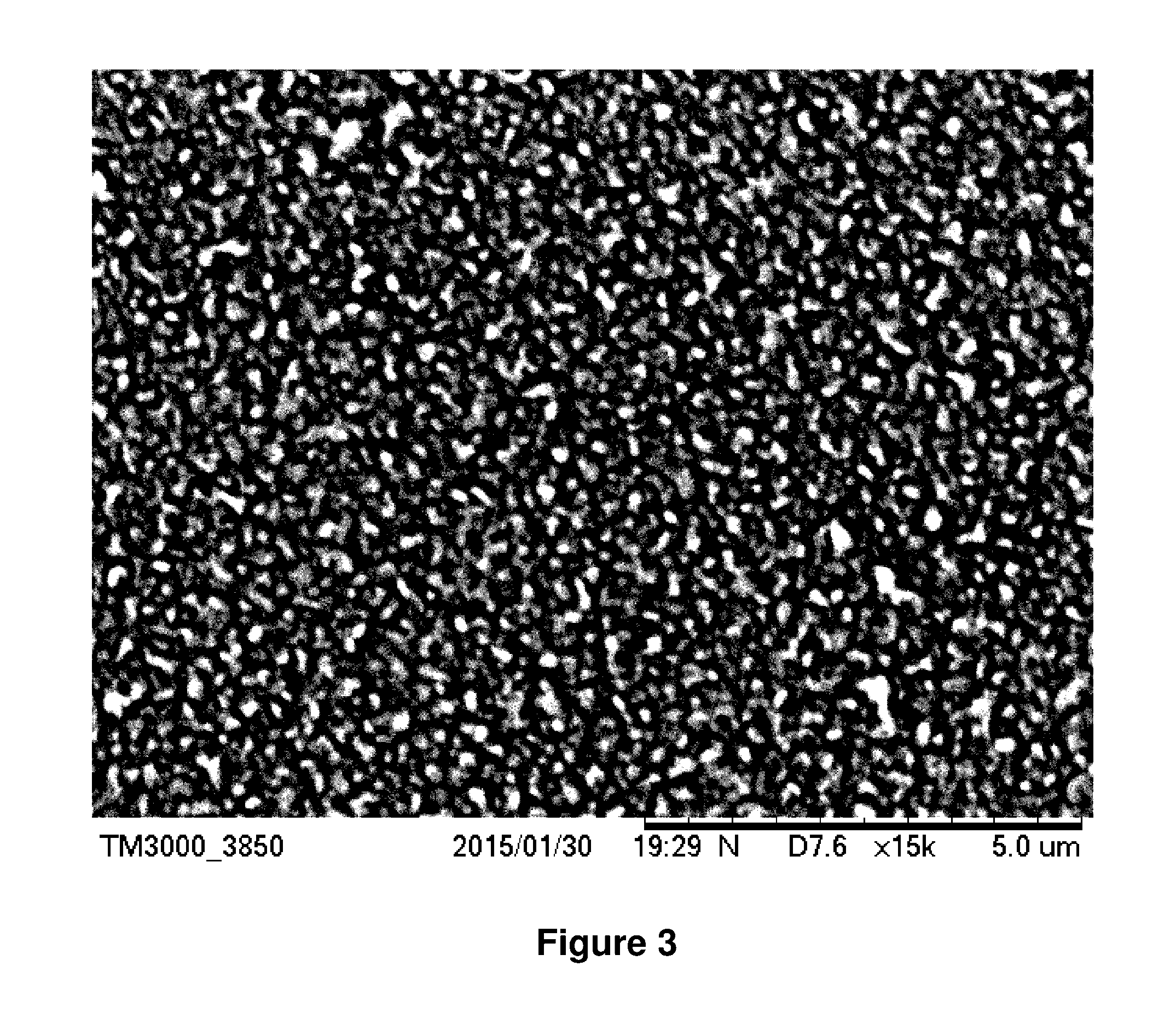Combination of chemical additives for enhancement of water flux of a membrane
a technology of chemical additives and membranes, applied in membranes, reverse osmosis, membrane technology, etc., can solve the problems of limited success and reduced flux, and achieve the effects of high permeability of tfc, moderate pressure rating, and avoiding the cost of expensive high pressure rated systems
- Summary
- Abstract
- Description
- Claims
- Application Information
AI Technical Summary
Benefits of technology
Problems solved by technology
Method used
Image
Examples
examples 1-3
Comparative Membranes
[0170]Three comparative membranes were formed. In Example 1, the aqueous phase included no additives. In Example 2, the aqueous phase included 0.05 wt % metal chelate. In Example 3, the aqueous phase included 3 wt % DMSO.
[0171]For each of Examples 1-3, an organic phase was prepared. The organic phase solution was prepared containing 0.348 wt % TMC (Sigma Aldrich, St. Louis, Mo.), 0.014528 wt % Irganox® 1010 (a sterically hindered phenolic anti-oxidant, CAS No. 6683-19-8 from BASF Schweiz AG, Basel, Switzerland), and 8 wt % mesitylene (1,3,5-trimethylbenzene, Sigma Aldrich, St. Louis, Mo.) in an isoparafinic solvent, Isopar™ G solvent (a low odor, low aromatic hydrocarbon solvent from ExxonMobile Chemical Company, Houston, Tex.). The solution was prepared by placing the Isopar G in a first vessel, mixing in a second vessel the Irganox 1010, TMC and mesitylene together to form a mixture, and adding that mixture to the Isopar G in the first vessel. The mesitylene i...
example 1
No Additives in the Aqueous Phase
[0172]In comparative Example 1, an aqueous phase solution containing 4.25 wt % MPD (Dupont, Wilmington, DA), 6.75 wt % triethylammonium camphorsulfonate (TEACSA, Sunland Chemicals, Los Angeles, Calif.), 0.06 wt % sodium lauryl sulfate (SLS, Columbus Chemical Industries, Inc., Columbus, Wis.) in DI water was prepared by first adding the DI water to a mixing vessel, followed by addition of the TEACSA, MPD and SLS, although any permutation of order of addition of the components can be used. The SLS increases the wettability of the aqueous solution.
example 2
Metal Chelate Alone in the Aqueous Phase
[0173]In comparative Example 2, a metal chelate was included in the aqueous phase. The metal chelate was Sr(F6acac)2, where F6acac refers to 1,1,1,5,5,5-hexafluoro-acetylacetonate, having the structure:
[0174]The aqueous phase solution contained 4.25 wt % MPD, 6.75 wt % TEACSA, 0.06 wt % SLS and 0.05% Sr(F6acac)2 in DI water. The aqueous phase was prepared by first adding the DI water to a mixing vessel, followed by addition of the TEACSA, MPD, SLS and Sr(F6acac)2, although any permutation of order of addition of the components to the DI water can be used.
PUM
| Property | Measurement | Unit |
|---|---|---|
| Temperature | aaaaa | aaaaa |
| Fraction | aaaaa | aaaaa |
| Fraction | aaaaa | aaaaa |
Abstract
Description
Claims
Application Information
 Login to View More
Login to View More - R&D
- Intellectual Property
- Life Sciences
- Materials
- Tech Scout
- Unparalleled Data Quality
- Higher Quality Content
- 60% Fewer Hallucinations
Browse by: Latest US Patents, China's latest patents, Technical Efficacy Thesaurus, Application Domain, Technology Topic, Popular Technical Reports.
© 2025 PatSnap. All rights reserved.Legal|Privacy policy|Modern Slavery Act Transparency Statement|Sitemap|About US| Contact US: help@patsnap.com



